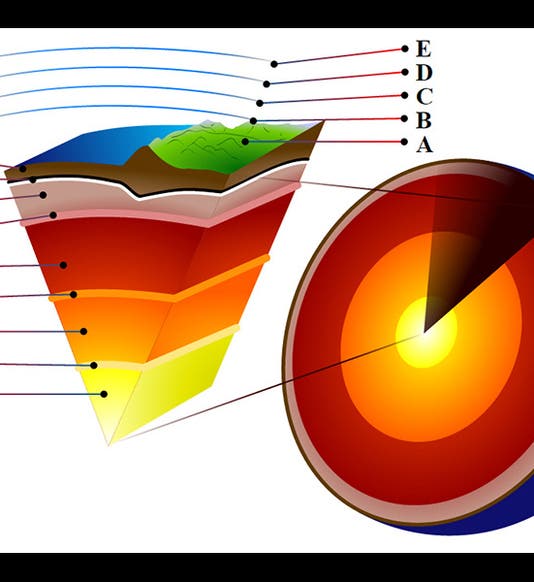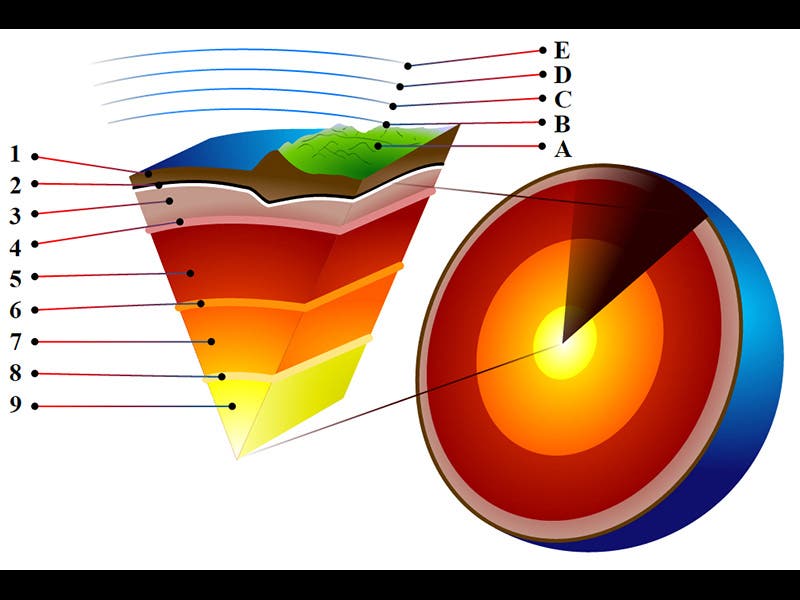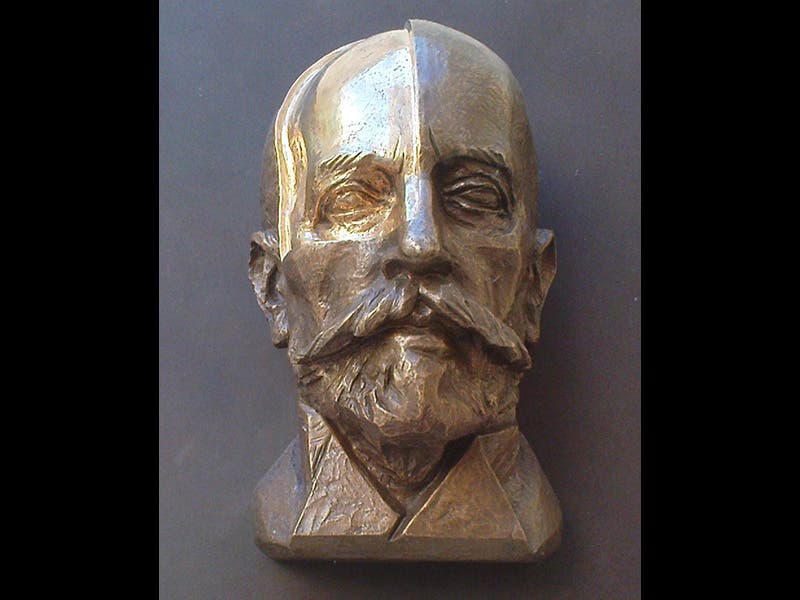Scientist of the Day - Andrija Mohorovičić
Andrija Mohorovičić, a Croatian seismologist, was born Jan. 23, 1857. On Oct. 8, 1909, there was an earthquake in the Balkans. Mohorovičić, director of the Meteorological Observatory in Zagreb, studied the seismograms of the quake and noted a curious set of echoes among the seismic waves recorded. The only way he could explain the double set of waves was to suppose that there is a discontinuity in the rock structure somewhere below the surface, so that one set of waves travelled along the surface, and the other moved further down, in the denser rock below the discontinuity. He was even able to calculate how far down the discontinuity lay--about 30 miles.
In a nutshell, Mohorovičić had discovered that the earth has a thin crust lying on a denser mantle, and the boundary between them has been called, ever since, the Mohorovičić discontinuity, or, in short, the Moho. The first image above is a colored diagram of the layers of the earth, in which layer 1 is the crust, layer 2 the Moho, and layer 3 the upper mantle.
His paper was published in the Godiesnj Izvjesce (Yearbook) of the Meteorological Observatory of Zagreb in 1910 (see second image above). We have this issue in our serials collection; Mohorovičić’s paper is printed first in Croatian (I assume it is Croatian) and then again in German (that I am sure of). The paper has been cited thousands of times in the seismological literature, but I wonder how many of those who cite it have ever seen it, because it is quite scarce in the States. We are fortunate to have it.
In the Clementinum in Prague, home of the National Library of the Czech Republic, a bust of Mohorovičić was unveiled in 2011 (third image above). Notice how cleverly his face is sculpted in two distinct layers, as if the human skull has a crust and mantle just like the earth. In his case, it certainly has a Moho.
Dr. William B. Ashworth, Jr., Consultant for the History of Science, Linda Hall Library and Associate Professor, Department of History, University of Missouri-Kansas City







![Using an astrolabe to measure the depth of a well, woodcut in Elucidatio fabricae vsusq[ue] astrolabii, by Johannes Stöffler, 1513 (Linda Hall Library)](https://preview-assets-us-01.kc-usercontent.com:443/9dd25524-761a-000d-d79f-86a5086d4774/a998eb50-55d2-4a88-ace2-a50aa5fa86e7/Stoffler%201.jpg?w=210&h=210&auto=format&fit=crop)

